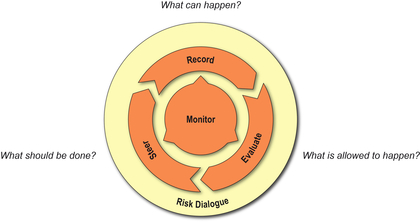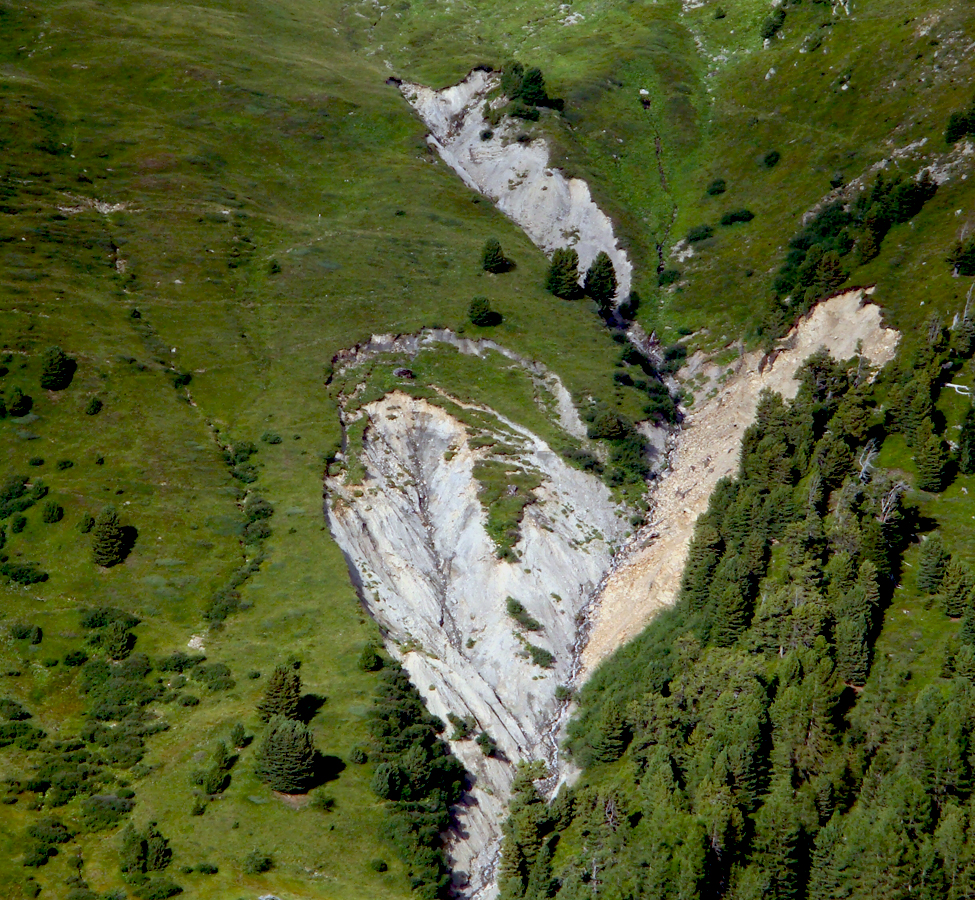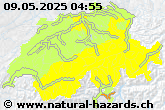Why do we need integrated risk management?
The tasks involved in risk governance consist of elements such as (see Figure 1):
- periodically identifying and analysing the prevailing risks;
- evaluating and weighing of risks in relation to their acceptability;
- implementing measures to manage the prevailing risks. Through suitable measures, new risks are avoided, unacceptable risks reduced and acceptable risks managed. A risk dialogue among all actors is a precondition for effective risk management.
- continuous monitoring of the relevant risk factors and the effectiveness of measures;
- communicating about risks and maintaining a risk dialogue with all stakeholders.

According to the PLANAT strategy, Integrated risk management implies achieving a comparable security level for all natural hazards. Numerous actors bear responsibility for protecting against natural hazards, either because they are legally obligated or they assume individual responsibility. All responsible actors must be involved in the planning and implementation of measures. In this process it is relevant to consider not only one type of measure but also the full spectrum of possible measures.
Integrated risk management is informed by comprehensive data and information about the occurrence of hazards and the respective risks. The measures used to control risks are diverse, have to be combined in an optimal way and should cover the three phases of the risk management cycle: mitigation preparedness, response and recovery.



